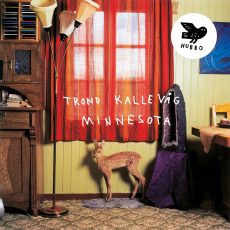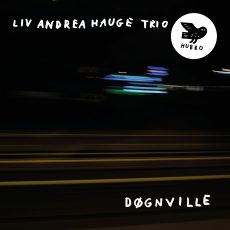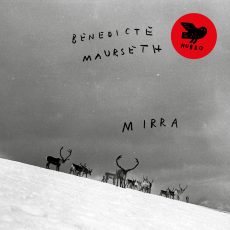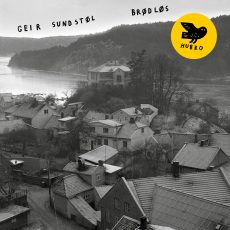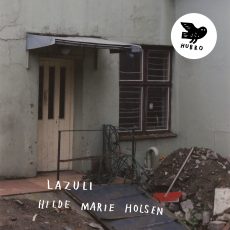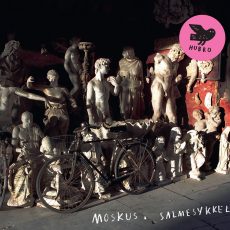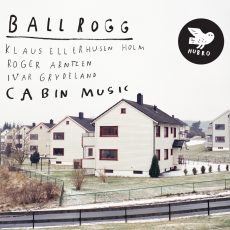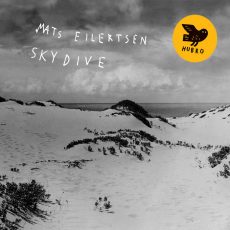While the Norwegian Grammy-nominated ‘The Haze of Sleeplessness’ used a whole keyboard-museum’s worth of antique synths and contemporary digital software to create its vast array of sounds, everything on ‘Ghost Caravan’ is the product of one organ’s pedals, pipes and sonic plumbing.
”There’s not so much of a relationship to ‘Haze’”, says Ståle Storløkken of the new album. “That album was more based on improvised ideas that were tweaked and arranged, while this one is all improvised with almost no editing at all. Everything you hear is from the church organ, with no additional instruments. The basic concept of the record, and the arrangement of the titles and pieces, is done in such a way that they alternate between a fluent, “on the move”, abstract mood and a more recognisable, concrete and grounded mood. At the same time it should be so open that listeners will hopefully have their own unique experience. The organ at Steinkjer is not a big organ but it has some really nice sounds, with a number of quirks and mechanical eccentricities that suit my music.”The organ is partly a reconstruction based on a Wagnerorganin Nidarosdomen built originally in 1741, the organ is housed in the strikingly modernistic Steinkjer kirke, designed by Olav S. Platou in 1965, and featuring glass panels by the artist Annar Millidahl .
What Ghost Caravan does share with its predecessor is a seemingly limitless acoustic space for the listener’s imagination to roam in, with Storlokken creating a cavernous cathedral of sound. The audio dynamics span an enormous range, capable of stretching from the quietest breathy whisper to a basso profundo squawk or scream, sometimes within seconds of each other. Similarly, the incredible variety of sounds that Storløkken coaxes from the organ can defy rational analysis, with the resolutely analogue instrument appearing to echo the industrial, found-sounds of clanking machinery or buzzing electronics that one might expect to encounter through digital sampling or the tape-based experiments of musique concrete. As recorded in situ by star guitarist Stian Westerhus, mixed at Heaven Hill Studio by Storløkken himself, and mastered by Helge Sten at Audio Virus Lab, ‘Ghost Caravan’ is like an audio junkie’s dream test-recording, with a mile-high dynamic frequency and a disconcertingly transparent fidelity to the grainy textures of the organ’s wheezing breath and clunky gear-changes. Over ten separate improvised pieces which connect into an informal suite through the repetition of key elements and sequential titles (with four ‘Spheres’ and four ‘Cloudlands’, plus ‘Ghost Caravan’ and ‘Drifting on Wasteland Ocean’), Storløkken has made a strikingly unified, self-referential aesthetic world that can stand as a true work of art.
Unlike the occasional sci-fi references and retro-futurist sounds on ‘The Haze of Sleeplessness’, which could put one in mind of electronic film scores from ‘Forbidden Planet’ to ‘Blade Runner’, ‘Ghost Caravan’ has no obvious thematic line or narrative thread. It’s easy, however, to imagine the spectral presence of a phantom silent cinema organ-accompanist as one listens. The inevitable subjective associations with film might also stretch from the silent era to cult horror hits such as ‘Carnival of Souls’ or ‘The Abominable Dr Phibes’, which feature organs and organists. But perhaps the most relevant analogy for ‘Ghost Caravan’ lies with the celebrated tradition of improvising organists at the church of Sacre-Coeur in Paris, where organists such as Rolande Falconelli, Naji Hakim and Daniel Roth have specialised in exploring the potential of the church’s great organ through spontaneous composition.With a recording career dating back to 1991, Ståle Storlokken (born 1969) is one of the most prolific and eclectic figures in Norwegian jazz and experimental music. He has longstanding musical relationships with a host of artists, from Terje Rypdal and Arve Henriksen to the bands Supersilent, Motorpsycho and Elephant9











